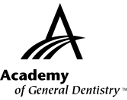|
Exercise No. 364
Subject Code: 017
Dental Materials
The 15 questions for this exercise are based on the article, Surface characteristics of resin composite materials after finishing and polishing, on pages 26-32. This exercise was developed by Charles F. Martello, DDS, FAGD, in association with the General Dentistry Self-Instruction committee.
|
Reading the article and successfully completing the exercise will enable the participant to:
- understand the clinical importance of finishing and polishing resin composite materials (RCMs);
- identify the properties of RCMs that may enhance clinical esthetics; and
- decide which RCM to select for a particular clinical application.
|

